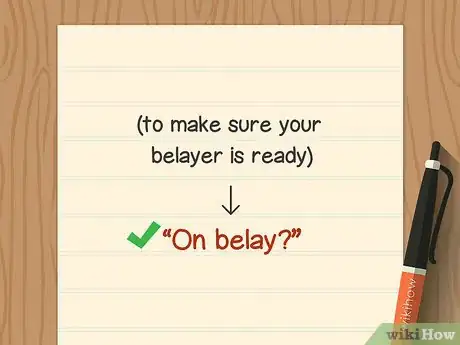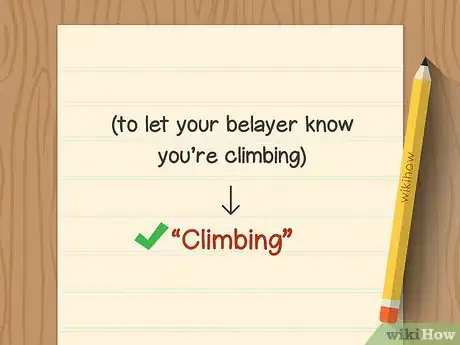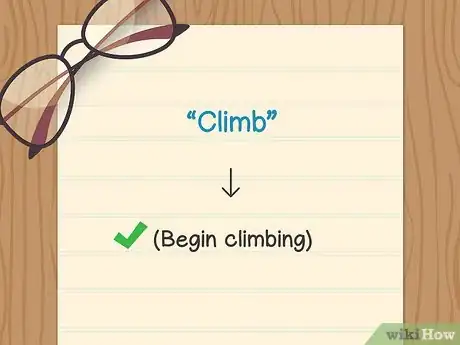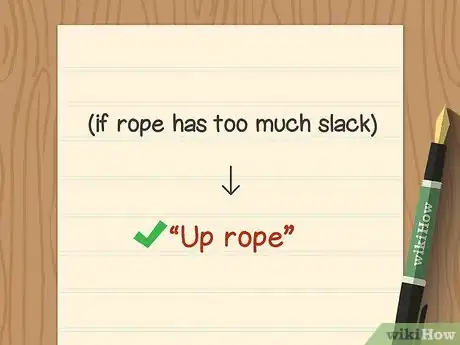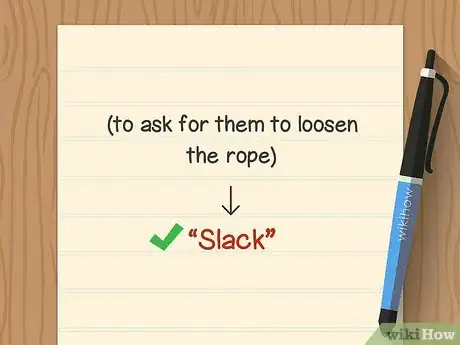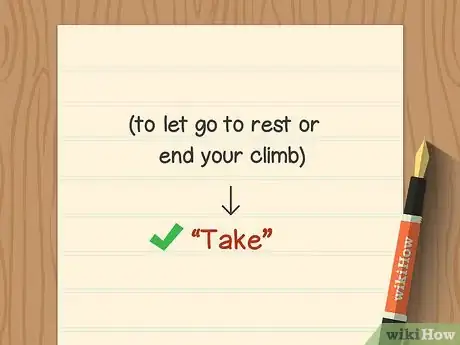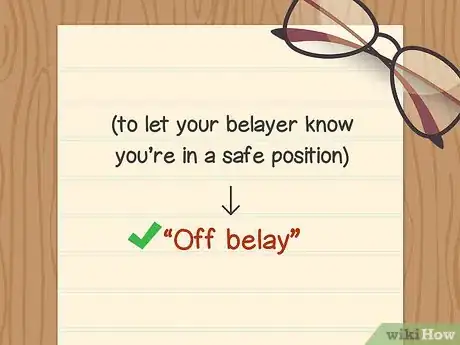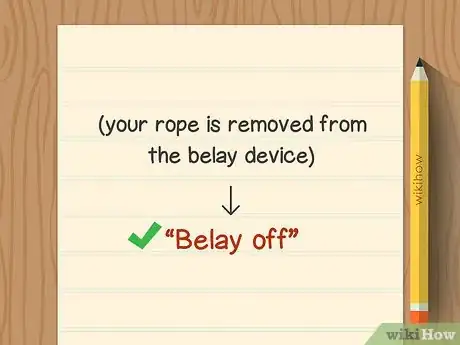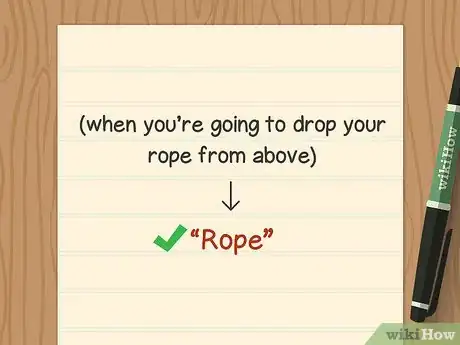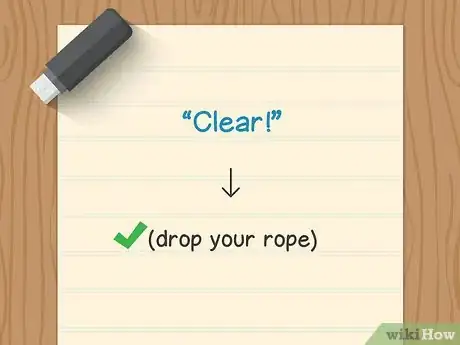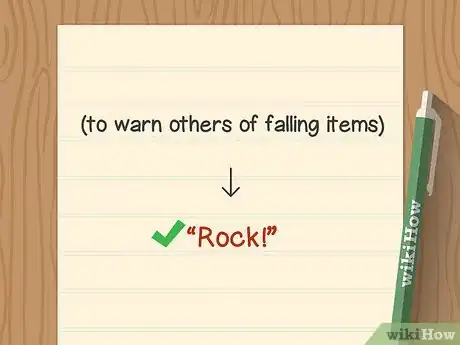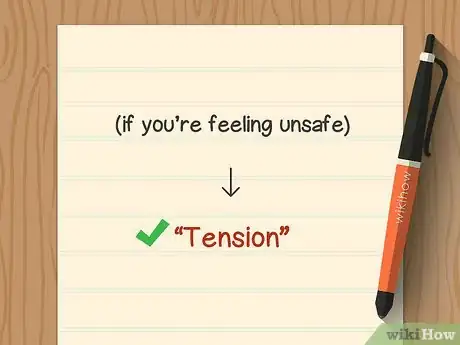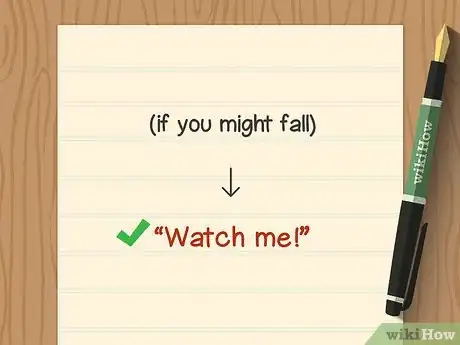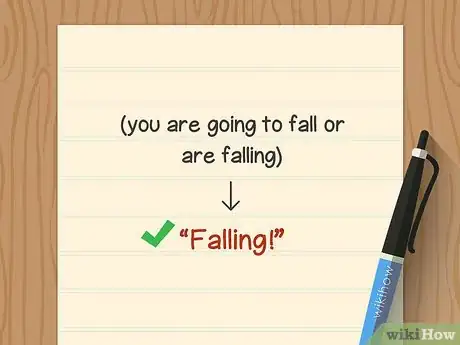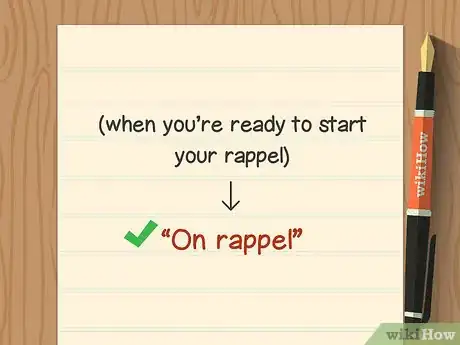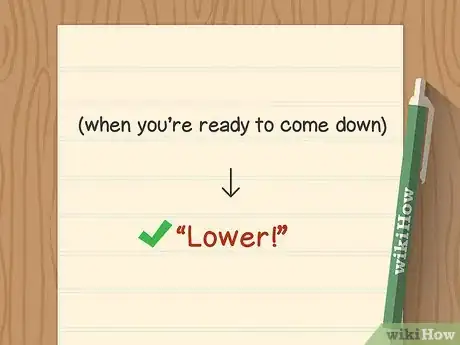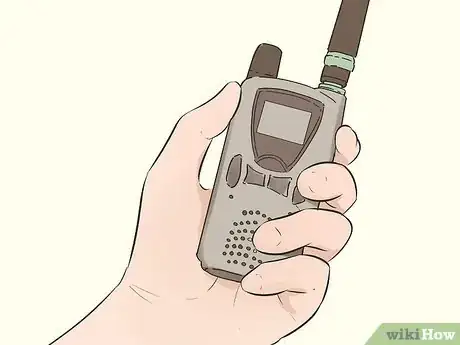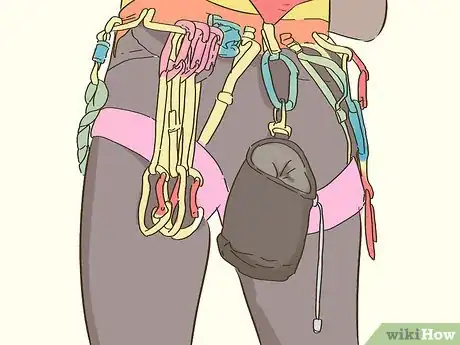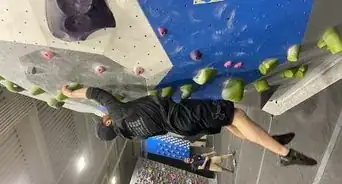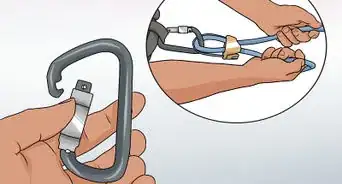This article was co-authored by Erika Noble and by wikiHow staff writer, Danielle Blinka, MA, MPA. Erika Noble graduated from Stanford University with a BS in Management Science & Engineering. After competing in collegiate rock climbing competitions as part of the Stanford Rock Climbing team, Erika worked as a Rock Climbing Instructor in Lake Tahoe. She continues to boulder and climb throughout California and the Southwest.
This article has been viewed 8,909 times.
When you’re rock climbing, it’s important that you be able to communicate with your belayer. However, it’s normal for them to struggle to hear you in a loud rock climbing gym or out in nature. Fortunately, you can use basic, universal commands that are easy to remember. This will allow you to safely communicate with your belayer during your climb.
Steps
Beginning Your Climb
-
1Ask "On belay?" to make sure your belayer is ready. Wait until you are tied in and ready to start your climb. Then, face your belayer and ask them, “On belay?” to make sure they’re in position and ready to belay you. If they're ready, they’ll respond, “Belay on.”
- Your belayer may check your knots and harnesses before they respond.
- Once your belayer confirms that they’re ready to belay you, it’s safe to start your climb.
-
2Say "Climbing" to let your belayer know you’re climbing. Approach the rock climbing wall or the summit you plan to climb. Next, get into position to start your ascent. Before you begin, call, “Climbing” to let your belayer know the climb is starting and they need to belay you.
- This is short for “I’m climbing.”
Advertisement -
3Begin climbing when your belayer says, "Climb." After you say “Climbing,” your belayer will likely call “Climb!” This means that they are ready to pay attention to your ascent and properly provide tension to your ropes.
- Some belayers may call “Climb on!” Make sure you know which command your belayer will be using before you start your climb. If you get out of earshot and take a break, you need to be able to understand the command based on how the syllables sound.
Ascending the Wall or Summit
-
1Call “Up rope” if your rope has too much slack. This tells the belayer that you want them to pull up on the rope to tighten it. Once you give this command, they’ll increase the rope tension.
- In some cases, your belayer may call a response to this command, such as “Thank you.” However, they may say nothing.
-
2Use “Slack” to ask for them to loosen the rope. Your rope may get too tight during your climb, so you may need some slack. When this happens, call “Slack” to your belayer. Then, they’ll loosen your rope for you.
- Like with “Up rope,” your belayer may respond with something like, “Thank you!”
-
3Call "Take" if you want to let go to rest or end your climb. This command lets your belayer know that they need to lock off your line so that you won’t fall when you let go. Once they’ve locked your line, you can safely let go. Use this command to take a break during your climb, end your climb, or when you reach the top of the wall or summit.
-
4Use “Off belay” to let your belayer know you’re in a safe position. This means you’re either on the ground or anchored into an upper station or belay. Say “Off belay” to let your belayer know you’re safe and it’s okay for them to take a break.[1]
- For instance, you might use this command if you’ve reached a ledge on a summit and want to look around for a few minutes.
-
5Listen for “Belay off” to know your rope is removed from the belay device. Your belayer should give this command in response to “Off belay.” It lets you know that your belayer has stopped belaying you and has detached your rope from the belay device.
- Be careful while your rope is detached, as you won’t have any tension on your rope to stop a fall.
-
6Call “Rope” when you're going to drop your rope from above. You might use this command when you need to get back on belay after a break. It lets your belayer know that you’re dropping your rope so it can be attached to the belayer.
-
7Listen for “Clear!” before you drop your rope. If you’ve been off belay, you may need to drop your rope. Your belayer will let you know when it’s safe to drop it by shouting “Clear!”
- Dropping your rope too early could be dangerous, as your belayer won’t be expecting it. The rope may strike someone, or you may mistakenly believe it’s attached when it’s not.
-
8Shout “Rock!” to warn others of falling items. During your climb, treat all falling items as rocks. If you see something falling, yell “Rock” to warn others, including your belayer.
- Even if it’s not a rock, any falling item can harm a person if it strikes them.
- Anyone can call, "Rock!" Be sure to listen for this command during your climb so you can protect yourself if an object is falling.
Handling a Fall
-
1Say “Tension” if you’re feeling unsafe and want your rope very tight. It’s normal to get nervous when you’re rock climbing, especially if you’re scaling a very high wall or summit. If you’re worried about falling, you can call out, “Tension!” to have your rope pulled as tightly as possible. This prevents you from falling even a short distance if you lose your footing.
- Your belayer should keep up the tension once you give this command. If you change your mind, you can call “Slack!”
-
2Shout “Watch me!” if you might fall. This lets your belayer know that you’re feeling insecure and think you may fall. They’ll make sure your rope is properly tightened so that you’ll be safe if you do fall.[2]
- Your belayer will make sure that you are safe at all times, so you don’t need to be afraid during a fall.
-
3Yell “Falling!” if you are going to fall or are falling. This signals to your belayer to tighten up on your rope and guide you down to the ground. You won’t fall down the wall or summit, so try not to be scared.[3]
- An experienced belayer is trained on how to make sure you fall safely.
Coming Down
-
1Say “On rappel” when you’re ready to start your rappel. Before you descend, give the command “On rappel.” This warns your belayer and other climbers that you’re about to come down. Once the command is given, it’s safe to slide down your line.
- If other climbers are on the same wall or summit, it’s best to check below you before you start your rappel.
- Use this command when you're in control of your descent.
-
2Use “Rappel off” to signal you’re on the ground and off the rope. Once you safely reach the ground, detach your rope from your harness. Then, call “Rappel off” to let your belayer know that you’re finished.
- This will end your climb.
-
3Call out "Lower!" when you’re ready to come down from a wall. Use this command when you reach the top of the wall or if the climb is too difficult for you to finish. It will signal to your belayer that you want them to slowly lower you back to the ground. During your descent, lean back in your harness and relax.
- Use this command when your belayer is controlling your descent.
- Once your belayer starts to lower you down to the ground, it’s safe to let go of the wall. Your belayer won’t let you fall.
- In some gyms, you’ll call “Ready to be lowered!” or “Ready to Lower!” Check with your belayer before you begin to make sure you’re using the right command.[4]
-
4Expect your belayer to say “lowering” when your descent begins. When you hear this command, you’ll know it’s safe to relax. Let go of the wall or summit and lean back in your harness. Your belayer will safely guide you down to the ground.
Calling Your Commands
-
1Face your belayer when call your commands. The sound of your voice will go in the direction you’re facing. That means your belayer might have a hard time hearing you if you are facing away from them. Do your best to direct your commands in the direction of your belayer.[5]
- For instance, look down and turn your head away from the wall or summit.
- Try to spot your belayer before you make your call, if you can. This may not be possible if you’re climbing a high summit with ledges or blind spots, but do your best.
-
2Adjust your volume to fit your environment. In an empty gym, you might be able to use a moderate volume. However, speak louder if you’re in a busy gym or are climbing outdoors. Otherwise, your belayer might not hear you.[6]
- It’s common to shout your commands to your belayer.
-
3Say the command correctly every time so the meaning is understood. Using simple commands makes it easy to communicate with your belayer even when you’re far apart and it’s hard to hear you. In some cases, your belayer won’t actually hear the words you say, even if you’re yelling. However, using the same exact phrasing each time will help your belayer know what you mean even if they can’t hear you.
- For instance, let’s say you’re ready to rappel down. Your belayer may not hear “On rappel!” Instead, they may hear “Un ah-el.” If you use your commands consistently, they’ll still know what you mean.
-
4Use a handheld radio device if the area is loud or you’re going a long distance. It may be impossible for you and your belayer to hear each other if you’re climbing a very high summit, the weather is very windy, or your indoor gym is very busy. When this happens, it’s best to use a handheld radio so that you can communicate with your belayer. Wear the radio in an easy-to-access location, like your waist or chest.[7]
- Turn up the volume so you can hear your belayer over the noises in your environment.
-
5Stay up-to-date on safety requirements for belaying. Rock climbing is generally safe, as long as you follow basic safety requirements. For instance, make sure you always wear a harness and properly-fitting climbing shoes. Tie your climbing rope with a figure-8 knot to keep it secure. Additionally, make sure your belayer is belay-certified and experienced.[8]
- If your belayer isn’t very experienced, you may want to have another belayer or rock climbing expert supervise your climb.
Expert Q&A
-
QuestionHow can I test my belaying skills?
 Erika NobleErika Noble graduated from Stanford University with a BS in Management Science & Engineering. After competing in collegiate rock climbing competitions as part of the Stanford Rock Climbing team, Erika worked as a Rock Climbing Instructor in Lake Tahoe. She continues to boulder and climb throughout California and the Southwest.
Erika NobleErika Noble graduated from Stanford University with a BS in Management Science & Engineering. After competing in collegiate rock climbing competitions as part of the Stanford Rock Climbing team, Erika worked as a Rock Climbing Instructor in Lake Tahoe. She continues to boulder and climb throughout California and the Southwest.
PCIA Certified Rock Climbing Instructor Your local rock climbing gym can help! To make sure you know all of the up-to-date safety requirements, take the belay test with your partner at your local gym.
Your local rock climbing gym can help! To make sure you know all of the up-to-date safety requirements, take the belay test with your partner at your local gym.
References
- ↑ https://rockandice.com/how-to-climb/how-to-belay/
- ↑ https://rockandice.com/how-to-climb/how-to-belay/
- ↑ https://rockandice.com/how-to-climb/how-to-belay/
- ↑ https://rockandice.com/how-to-climb/how-to-belay/
- ↑ https://www.climbing.com/skills/learn-this-effective-multipitch-communication/
- ↑ https://www.climbing.com/skills/learn-this-effective-multipitch-communication/
- ↑ https://www.climbing.com/skills/learn-this-effective-multipitch-communication/
- ↑ https://www.trianglerockclub.com/raleigh/about/safety-policies/
